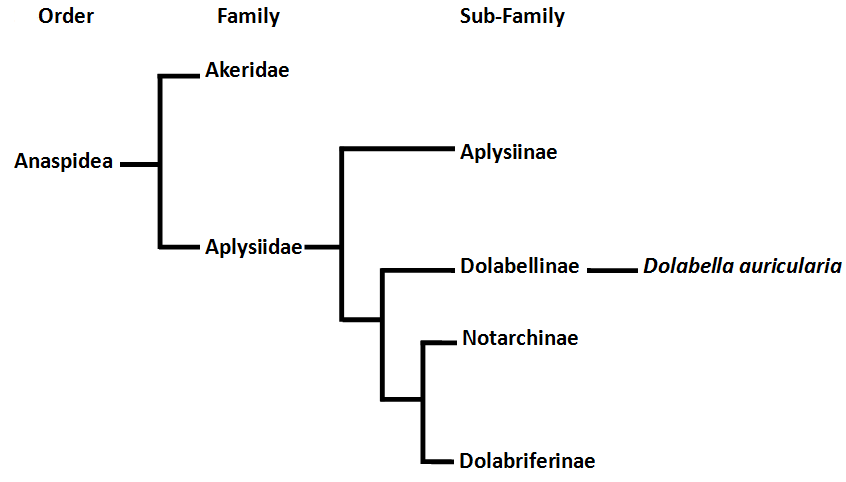Summary
Physical Description
Ecology
Life History & Behaviour
Anatomy & Physiology
Evolution & Systematics
Biogeographic Distribution
Conservation & Threats
References & Links | Evolution & Systematics

Phylogenetic tree of the order Anapsidea based on morphological traits. After Eales (1960), Klussmann-Kolb (2004), Ruppert et al. (2004).
Gastropoda is a class within the phylum Mollusca which are characterised
by a calcareous shell and muscular foot (Ruppert et al. 2004). Wedge sea hares are part of the suborder Anaspidea (the sea hares) which are part of the Opistobranchs, a sub-class of the Gastropoda. Opistobranchs are characteised by a trend towards the loss of an
external shell and detorsion as evident by their nervous system (Kandel
1979). Anaspidea are unique among the Opistobranch by having two pairs of tentacles (Wägele et al. 2008). The Anaspidea are split into two families: the Akeridae and the Aplysiidae of which the wedge sea hares fall under. Wedge sea hares are in the sub-family Dolabellinae.
The earliest fossil record for the Anaspidea is approximately 54 million years old, the Opistobranch fossil record goes back 160 million years ago (Valdés and Lozouet 2000, Wägele et al. 2008).
A phylogeny of sea hares based on learning capability of neural control was proposed by Wright et al. (2006) providing evidence for Aplysiinae and Dolabellinae were more related to each other than the Dolabrierinae (see below).

A phylogeny of sea hares to Genus based on neuromodulation (Adapted from Wright et al. 2006).
The ancestral Aplysiidae (Klussmann-Kolb 2004)
The ancestor of the sea hares probably looked similar to the genus Aplysia. It may have been large, slug-like body shape, two head tentacles, a broad siphon, internalised shell, a gizzard, ink glands and a protrusible unarmed penis.
Related species
The other related species of sea hare on Heron Island is the green-spotted sea hare (Aplysiinae: Aplysia dactylomela). |
|